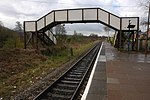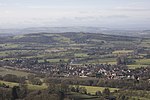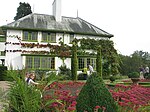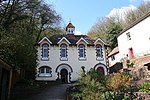Colwall Tunnels

The Colwall Tunnels are a pair of railway tunnels that connect Colwall and Malvern Wells on the Cotswold Line, passing under the Malvern Hills in the Welsh Marches region of England. The original route planned for the Worcester and Hereford Railway did not include the first tunnel, but its inclusion became necessary in response to pressure for the line to serve the towns of Malvern and Ledbury. The first Colwall Tunnel was one of the railway's greatest engineering challenges, after several years of work, it was opened to traffic on 17 September 1861. Its limited cross-section and single track configuration were often felt to be inadequate, contributing to pressure for a second tunnel to be constructed. A partial collapse of the first tunnel during 1907, temporarily blocking the railway, was another contributing factor.During the 1920s, work on the construction of a second tunnel commenced. Once this newer, wider bore was completed and brought into service on 2 August 1926, the original Colwall Tunnel was permanently closed that same day. It was used during the Second World War for storing munitions, being furnished with a concrete floor and a narrow-gauge railway. Only the newer bore remains in use as of the present day. It has been proposed to reopen the older bore as a cycle route.
Excerpt from the Wikipedia article Colwall Tunnels (License: CC BY-SA 3.0, Authors, Images).Colwall Tunnels
Broadwood Drive,
Geographical coordinates (GPS) Address Nearby Places Show on map
Geographical coordinates (GPS)
| Latitude | Longitude |
|---|---|
| N 52.08391 ° | E -2.350527 ° |
Address
Broadwood Drive
Broadwood Drive
WR13 6QQ
England, United Kingdom
Open on Google Maps








